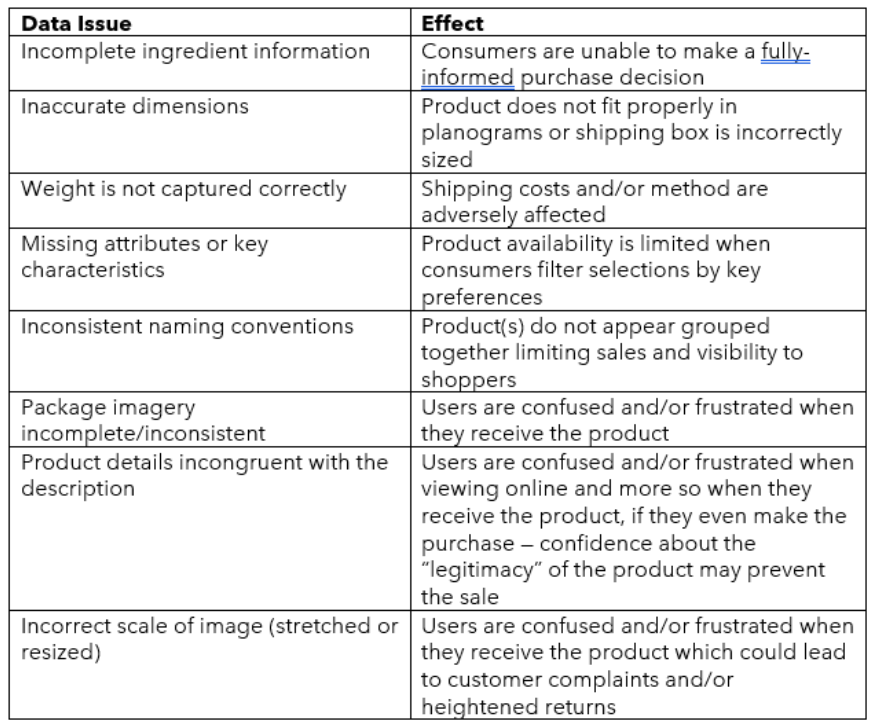by Lisa Lopez, data assets manager, as seen in Chain Drug Review
Data can be either an enabler or an inhibitor. Increasingly, organizations across the retail supply chain are recognizing the importance of centralizing data and harmonizing around a “single source of truth.” Having robust, accurate product data is absolutely critical for retailers in today’s landscape.
Product information quality (including descriptive information and product images) is essential to consumers’ online purchase decisions. These are the same elements that fuel assortment planning, placement rationale, retail pricing decisions and promotional plans. Unfortunately, many retailers segregate data into separate silos rather than aligning it into one unified structure. Moving big data out of its silos and combining it into something actionable is a large and complicated task. But with better business intelligence, more well-informed business strategy can be formulated. Conversely, the lack of consistent data, analysis methodology or vision to activate insights causes many companies to routinely miss opportunities to improve their bottom line.
Sifting through the hype around technologies such as artificial intelligence (AI) and data science to find the true business value and close the gap between theory and business functions requires intentional alignment to determine the single source of truth.
- Organizations generating data must avoid inconsistencies in codifying, storing and formatting content.
- Businesses transmitting or sharing data face formatting and data accuracy challenges.
- Companies consuming data (whether for internal purposes or to fuel consumer-facing e-commerce sites) risk issues around data accuracy, consistency and formatting.
- Firms collecting, cleansing and adding value to data (image and data descriptive elements) must ensure the most current packaging is used and versioned properly to support client needs.
The more data asset managers acquire, the greater the potential for inaccuracies and inconsistencies that must be resolved, often with manual interventions, before it can be used to generate value-adding insight. There are two important characteristics of well-managed data: standardization and harmonization. Standardization refers to the implementation of uniform processes and protocols for collection, set-up and storage of all product-related information. Harmonization refers to the practices which improve the comparability of variables from separate sources, permitting the combining of data in different ways and reducing heterogeneity.
As HRG has continued its mission to ensure a single source of truth for product information (package detail and image views), we have seen the following cause and effect of inaccuracies as retailers and brands alike struggle to manage mounting data (although the term “shopper” or “consumer” is used in the chart below, similar issues surface for internal databases or B2B sites):

Overcoming legacy infrastructures and restrictive silos is accelerating the meaningful use of data. Companies are realizing it is no longer enough to know the “why” behind the numbers — the key is to unlock the “how do we use this information?” To answer that question, companies are considering AI.
Beginning with a foundation of high-quality data is paramount. From workforce planning to space and assortment management to inventory optimization, accurate and complete data is critical. For those retailers unwilling or unable to centralize their data, time will continually be spent retracing their steps, and they may be left behind. While good data leads to good decision making, bad data can lead to poor decision making and potentially disastrous consequences.

